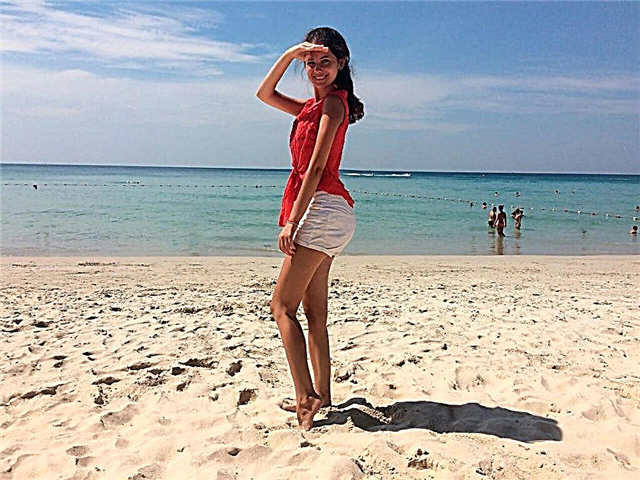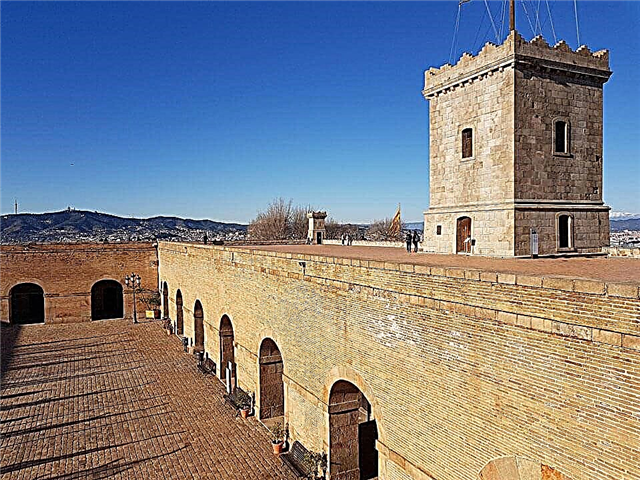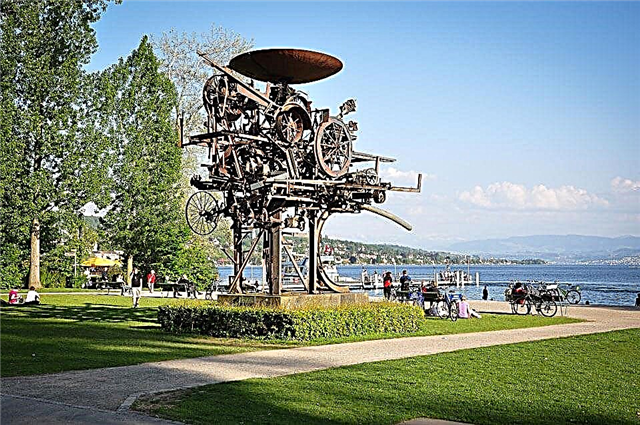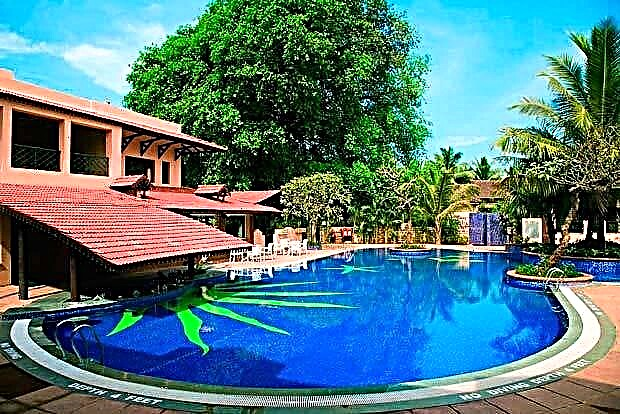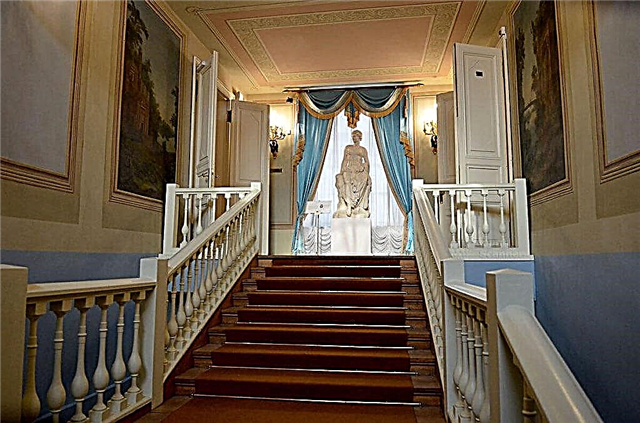Muscovites know and love the building located in the very center, not far from the Cathedral of Christ the Savior. People come here to admire the unique collections. Many children begin their first acquaintance with sculpture here. Future artists and sculptors feel at home in it. It is not surprising: today the State Museum of A. Pushkin is rightfully considered one of the most famous museums in the world. In terms of importance, his collection is not inferior to the collections of the Metropolitan Center and the Louvre. Excursions to Pushkin are included in the cultural program of every guest of the capital.
History

Every visitor to the capital knows the building located in the center. Once there were the stables of the oprichnina army, then - the Kolymazhny yard, where horses could freely ride. Then the premises were converted into a prison. Soon it fell into disrepair and was demolished. For some time there was a wasteland in the center of the city.
Through the efforts of Moscow University professor Ivan Tsvetaev at the end of the 19th century, the site was transferred to the university. It was Tsvetaev who came up with the idea of creating the Museum of Fine Arts. It was decided to hold a competition for the construction of the building. The rules were developed by the same Tsvetaev. 15 architects responded. 7 projects received high marks from the jury.
The commission consisted of famous artists:
- Benoit
- Bryullova
- Tomishko
- Sultanova
- Belemisheva
Klein's project won, and engineer Rerber was appointed to oversee the work. Klein received an advance from the university. With this money, he should travel to Europe to study architectural styles.
In 1898, work began. They were paid by subscription. However, in 1904 the construction site burned down. Some of the exhibits were lost. The patrons have abandoned their obligations. Further work was carried out at the expense of Nechaev-Maltsov.
The October coup added to the chagrin of the director of the museum. For several years, no firewood was allocated for heating the building. The exhibits were damp, and some of them got mold. During the Great Patriotic War in 1941, the glass vault was destroyed during the bombing. Until the end of the reconstruction (in 1945), the building stood without a dome.
Neighborhood with a huge outdoor swimming pool Moscow did not add to the health exhibits. The management of the center has repeatedly appealed to the Moscow City Council with reports on the alarming state of paintings and sculptures. But the decision to dismantle the reservoir was made only in the post-perestroika years.
Architecture

The special value of the building is that it is the last in the city, made in the tradition of the neo-Greek style. The building resembles the Athenian Acropolis, and the portico is copied from the Erechtheion temple. The construction materials were paid almost exclusively by Nechaev-Maltsov. And it turned out to be quite difficult.
Suffice it to mention that the marble quarried in the Urals was processed in Norway and from there went to Moscow. I had to overcome first the sea and then the river parts of the route. For the central staircase, marble was transported from Austria-Hungary. At first it was decided to open expositions only during daylight hours. To illuminate the artifacts, a huge convex glass roof was provided.
It was separately designed and calculated by the famous Shukhov. The facade was decorated with sculptures by Zaleman. Subsequently, the center was equipped with ventilation and artificial lighting. The internal layout assumed the location of the exhibition of ancient and ancient Greek art in the halls of the second floor. The halls of the first floor were devoted to the art of the Renaissance, Assyria, Egypt. The center's own library is also provided. One could get into it through a separate entrance from Kolymazhny Lane.
Hall decorations

The interiors were supposed to be designed in accordance with the theme of the exposition:
- The motives of the Hermitage stairs were used to decorate the lobby. However, the motives of Ancient Greece and Egypt were also added. You can see images of Slavs and stories from the myths of Ancient Greece. It is easy to recognize images of red vases. Stepanov and Nivinsky worked on the premises.
- In order to create the interiors of the White Hall, Vasnetsov was invited. But his vision of the decoration contradicted the opinion of the designers. Vasnetsov did not give up his principles. Therefore, another artist painted the ceiling. He depicted a version of the Greek temple of Niki Apteros.
- The panels for the halls where it was planned to place exhibits dedicated to Ancient Greece was to be painted by Aivazovsky. Death prevented the project from being realized. It was decided to involve Polenov, Korovin and Golovin in the implementation of the plan. They went to Greece to study the subject area. But Nechaev-Maltsov accused the artists of decadence and dismissed them from work. He commissioned little-known painters to paint the ceiling.
The reconstruction of the center is currently expected. According to the project, the old and new buildings will be connected by an underground passage. A museum town will be created. The exposition will expand.
Permanent exhibitions

Guests are presented with collections of artifacts from various historical periods. Here you can see plaster casts of priceless items:
- Ancient Greece
- Egypt
- Middle ages
But the originals are also exhibited in the center. The halls have:
- Priam's treasure discovered during Schliemann's excavations
- paintings by Rubens, El Greco, Watteau, Botticelli, Rembrandt, Poussin
It is noteworthy that each room has an interior corresponding to the theme. The exposition of the art of the countries of Europe and America of the 19th-20th centuries is separately highlighted. The collection of the center was based on private collections of Russian patrons of art Shchukin and Morozov.
Now, thanks to them, guests can see the creations:
- Monet
- Renoir
- Van gogh
- Gauguin
- Cezanne
- Picasso
- Matisse
All areas of art of the 19th-20th centuries are presented in the halls. Visitors will see works by followers of romanticism, symbolism, abstractionism, academism and realism from the period located at the turn of the century.
Branches

The Pushkin Museum has several branches:
- The memorial apartment of Alexander Sergeevich Pushkin is located in Moscow at 53 Arbat Street. The exhibition received its first guests back in 1986. That year, the 155th wedding anniversary of the poet and Natalia Goncharova was celebrated. In a small mansion owned by Khitrovo, the first months of the family life of the sun of Russian poetry passed. The house is a cultural monument.
- There is one more branch in Moscow, associated with the name of the Pushkins. The uncle of the great poet, Vasily Lvovich, lived at 36 on Staraya Basmannaya Street. Vasily Lvovich was a writer, he was the head of the Arzamas society.
- The Museum of Ivan Sergeevich Turgenev is located at 37 Ostozhenka Street in Moscow. The writer's mother lived in a small mansion made of wood. The same house is described in the story of Mumu. The wonderfully preserved building is a monument of regional significance. In 2007, it was decided to create a permanent exhibition dedicated to the writer. After the reconstruction of the mansion and the surrounding area, the exposition in 2018 received guests.
- The house-museum of Andrei Bely is located at 55 on the Arbat. The future poet, philosopher, writer, one of the founders of the Symbolist movement was born and raised here. Subsequently, Bely often changed addresses. But only the house on the Arbat was considered his homeland. It was here that the poet experienced his first brightest emotions.
Interesting Facts

Now it is difficult to imagine what hardships the organizers of the famous exposition had to go through:
- The center was not created for the general public, but for the students of Moscow University who sought to study sculpture. The creation committee included the entire leadership of the institution. The professors worked on the same enthusiasm, their work was not paid.
- The construction was funded by private individuals. Ivan Tsvetaev was personally looking for patrons of the arts.At first, he turned to the merchants of the First Guild. But he met inertness and unwillingness to spend money on art. Funding was carried out by one person - the breeder and diplomat Nechaev-Maltsov. He was not frightened even by a fire that happened at a construction site at the beginning of the 20th century.
- Artificial lighting was not planned during the design. It was believed that only in natural light sculptures look realistic. To ensure that there was enough light, Shukhov designed a massive glass dome.
- Architect Klein lost the competition announced by Tsvetaev. But it was Tsvetaev who insisted on accepting Klein's project. After completing the work, the architect received the title of academician.
- It was assumed that this would not be a separate building, but a whole town. Having arrived here, visitors could spend the whole day in the center.
- In 1941, the exhibits left for Novosibirsk and Solikamsk. They returned only in 1944, but the exhibition did not open to the public: the house stood without a roof. The first visitors came only in 1946.
- From 1946 to 1953, the building housed an exhibition of gifts presented to the father of nations. Permanent units have moved to storage.
- The paintings began to be exhibited only after the October coup. Prior to this, the center offered visitors to admire exclusively sculptures. Some of the canvases, without which it is impossible to imagine the Pushkin Museum, came from private collections. they were simply saved from destruction.
- The center possesses unique treasures, the main of which is the treasure of the Trojan king Priam. He came here from Germany in 1945. The general public saw the treasures found by Schliemann only in 1996.
- For its centenary, the center has received a luxurious gift. The Ministry of Culture paid for the purchase of Van Balen and Brueghel's painting The Baptism of Christ. Spent 20,000,000 rubles.
Excursions

The staff of the center conducts excursions for people of all ages:
- Children who do not go to school yet are invited to play. On Prechistenka 12/2, they will have a fascinating journey to the land of fairy tales written by Pushkin, a conversation with the Cat Scientist, a walk through the Thirty Kingdom. To get acquainted with the colorful town is offered at the branch, on Arbat, 53.
- Schoolchildren are offered both excursions in a traditional format and original quests. Children will be able to look at the works of the great writer from an unexpected point of view. The events will serve as an excellent addition to the textbook materials. Tours take place both on Prechistenka 2/2 and in branches.
- What could be more exciting than a detective? In such a lesson, students are invited to feel like investigators, to find what is written in the works between the lines. Such an event is interesting and useful: the works studied at school will be revealed from an unexpected side.
- By September 1, a holiday has been prepared for students of grades 1-4 - Hello, school! The guys will attend 3 fun lessons, a master class in the theater studio. The day will end with a performance.
- The choice of excursions for adults is wide. Both sightseeing and special events are offered. An experienced guide will tell you about the rarities on display and answer questions. For those who prefer to wander the halls alone, an audio guide is provided.
Events are held both in the main building of the center, at 12/2 Prechistenka Street, and in branches.
Visiting rules
Before visiting the center, you should familiarize yourself with the basic rules:
- You can get acquainted with the exposition both as a group and alone
- upon entering the territory, you must show your bags for inspection
- large items should be handed over to the storage room
- to enter the center, you should wear special shoes issued in the wardrobe
- outerwear must be returned to the wardrobe
- during the excursion, amateur photo and video shooting is allowed (without the use of a tripod and flash)
- on the territory of the center it is forbidden to shout, make noise, speak loudly
- it is forbidden to go behind the fences, touch the exhibits
- it is forbidden to eat and drink
Visitors who violate the established rules can be removed from the center.
Working hours
Main building and branches of GMP:
- On weekdays and weekends (except Thurs and Mon) - from 10 pm to 6 pm (tickets are sold through the ticket office until 5.30 pm)
- Thu - from 13 pm to 9 pm (tickets are sold through the ticket office until 20:30)
- The day off is Monday.
Ticket prices
Citizens can purchase tickets to the Main Building and branches of the GMP at the following prices:
- Adults - 250 rubles.
- Students and pensioners - 150 rubles.
- Entrance for children under 17 is free
Free admission days: June 6 (Pushkin Day in Russia) and February 10 (A.S. Pushkin Memorial Day).
How to get there
The complex is located at st. Volkhonka, no. 12. To get to the museum by metro, you need to get off at the Kropotkinskaya station and walk 100 meters. The museum complex is located just opposite the Cathedral of Christ the Savior. The same walking route (walking distance) is required if you need to go to the museum from Red Square and from the Kremlin.
If you go from the Belorusskaya metro station, it is best to take trolleybus # 1 and get off at the thirteenth stop. But it is imperative to be sure that the trolleybus is heading towards the Taganskaya station.
If you want to walk to the museum from the Lenin Library, the walk will take you no more than 10 minutes, but from the Park Kultury station you need to get ready for a 20-minute walk. From the station "Marksistskaya" you can get to the museum by trolleybus N 16 in fifteen to twenty minutes. In the same period of time, you can walk here from the Old Arbat - the walk will take about 20 minutes.
Distance from train stations. The farthest is the Kursk railway station. The route from it will take at least half an hour. Kazansky, Yaroslavsky and Leningradsky railway stations are located within a fifteen-minute metro ride from the museum. The closest station to the museum is Kievsky. The journey from it to the museum will take about ten minutes
The museum's exhibits - sculptures, art photographs, paintings and graphics - number more than 560 thousand items. Therefore, the Pushkin Museum in Moscow rightfully occupies a leading place in the ranking of the best sights of the capital.




